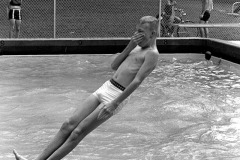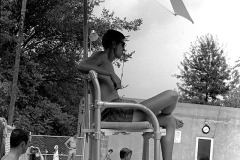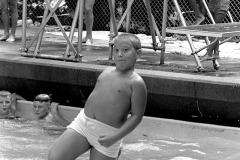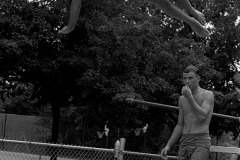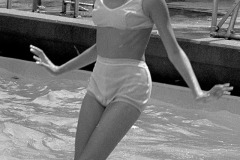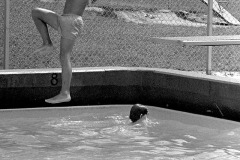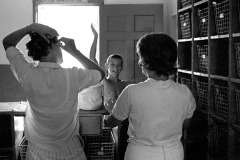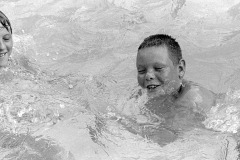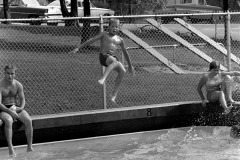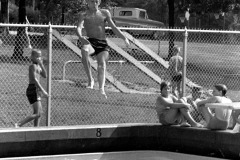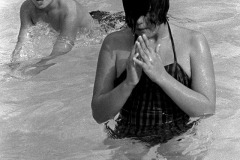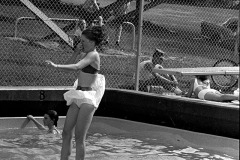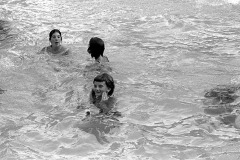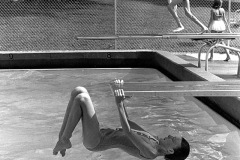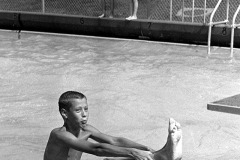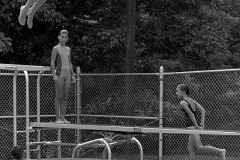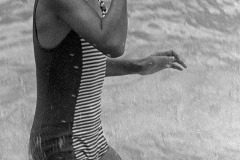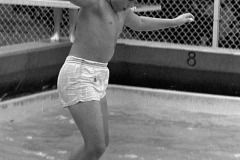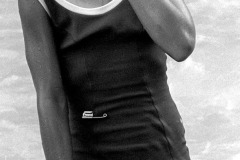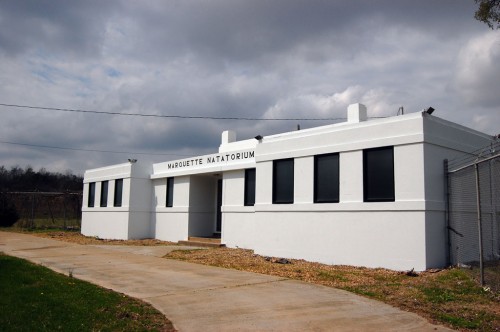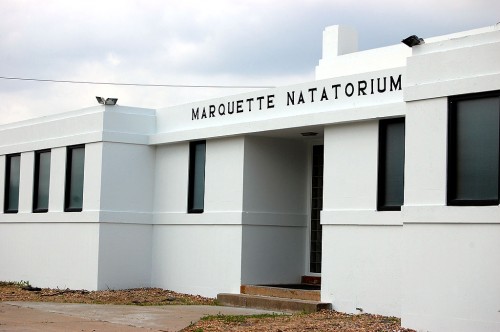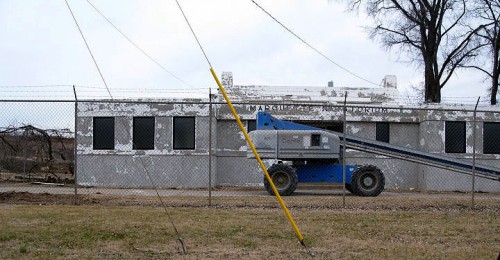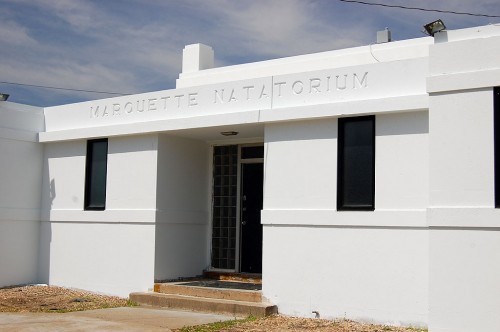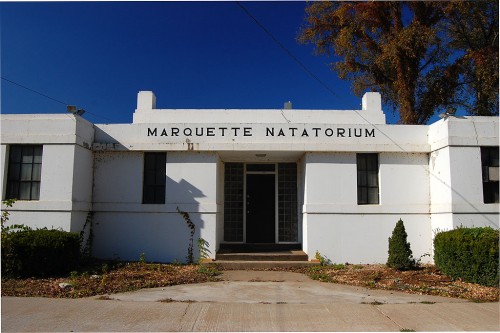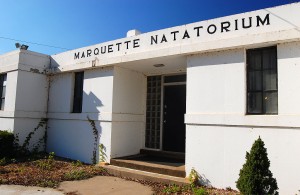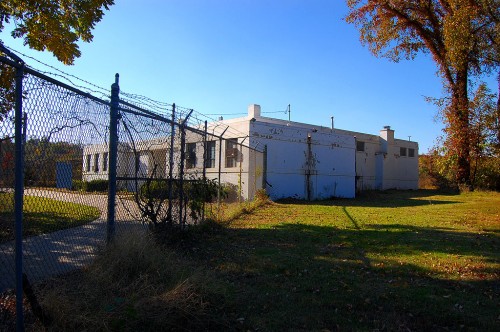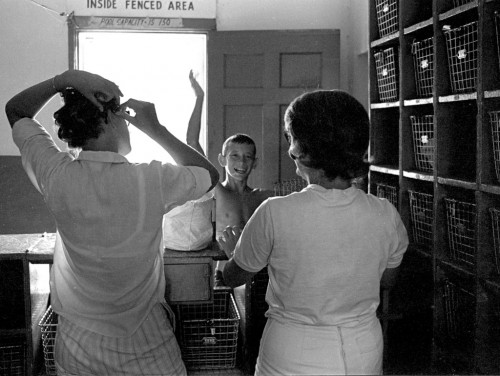 I get amused when I hear people complaining about federal stimulus programs, because a lot of the same gripes were made about FDR’s alphabet soup of the CCC, NRA, WPA and the like.
I get amused when I hear people complaining about federal stimulus programs, because a lot of the same gripes were made about FDR’s alphabet soup of the CCC, NRA, WPA and the like.
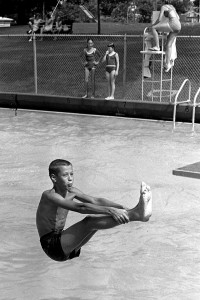 In 1938, Jackson agonized over spending $2,000 for materials needed by the WPA to build a swimming pool for the city. The Missourian reported June 7, 1938 that a delegation argued “that such a pool is a necessity, that other cities nearby have such pools and that the pools are frequented a great deal and pay for their upkeep. It was also said that the construction of a pool in the Sanford Park would redeem the park which has become more or less of a white elephant to the city and that, unless something is done to utilize it, the park might as well be sold.
In 1938, Jackson agonized over spending $2,000 for materials needed by the WPA to build a swimming pool for the city. The Missourian reported June 7, 1938 that a delegation argued “that such a pool is a necessity, that other cities nearby have such pools and that the pools are frequented a great deal and pay for their upkeep. It was also said that the construction of a pool in the Sanford Park would redeem the park which has become more or less of a white elephant to the city and that, unless something is done to utilize it, the park might as well be sold.
“It was also pointed out that daily Jackson people visit the swimming pool in Cape Girardeau, that, if Jackson had a pool, graduating classes from other towns could be invited to use it, that the pool would serve to keep the youth of the city off the streets in the idle summer months, that the Board of Education is spending $10,000 of the people’s money on a stadium that is used probably four or five times a year, and that only $1,500 of the people’s money is being asked for to build an $11,000 swimming pool that would be used 120 days a year.
The pool, as planned, would hold 140,000 gallons of water. The biggest concern was how much it would cost to maintain the pool. The City Council ducked making a decision by ruling that it would circulate a petition “to ascertain the feelings of the citizens regarding the matter.”
Jackson Swimming Pool and Drive-in
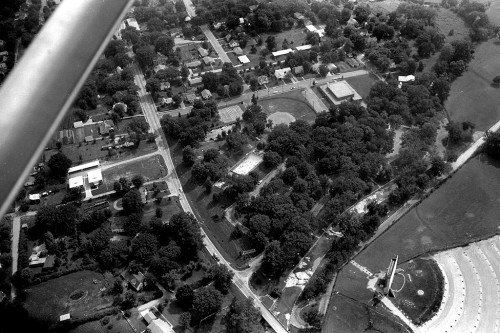 The voters must have decided they wanted the pool, because it WAS built. This aerial photo from the late 60s shows the pool in the middle of the photo. Jackson’s Drive-in Theater is at the bottom right. It’s the site of the new pool, which replaced the 1938 WPA project in 1976.
The voters must have decided they wanted the pool, because it WAS built. This aerial photo from the late 60s shows the pool in the middle of the photo. Jackson’s Drive-in Theater is at the bottom right. It’s the site of the new pool, which replaced the 1938 WPA project in 1976.
All good things come to an end
Oct. 13, 1965, The Missourian ran a story that said the old pool was too old and too small. James R. Nelson, summer pool manager and principal of Jackson High School, said the pool had become 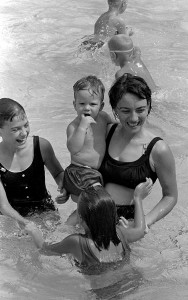 outmoded, machinery is believed to be in danger of collapse and huge leaks are releasing tremendous amounts of water. In one three-day period with no activity, the pool leaked 90,000 gallons of water, about half its capacity.
outmoded, machinery is believed to be in danger of collapse and huge leaks are releasing tremendous amounts of water. In one three-day period with no activity, the pool leaked 90,000 gallons of water, about half its capacity.
Nelson thought the problem was in the circulation system. When the pool was built, pipes were laid in the concrete around the pool. During the first 20 years of operation, the acid level of the pool was rarely checked and it was believed that acid over the years had eaten the pipes away. The presumed result was that the circulation system consists of holes in the concrete instead of pipes. Water leaked out at every joint or crack in the concrete. Water in the pool met safety standards, but just barely.
Pool has been filled in
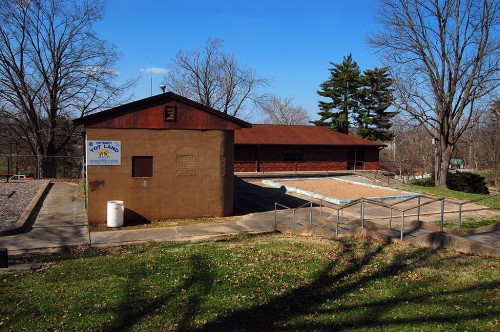 I’m not sure when the old pool closed, but a new pool, opened in 1976. The old pool has been filled and turned into a Tot Land. If you look closely at some of the photos in the gallery, you can still see where the lifeguard chairs were mounted and see barely make out the NO DIVING markers.
I’m not sure when the old pool closed, but a new pool, opened in 1976. The old pool has been filled and turned into a Tot Land. If you look closely at some of the photos in the gallery, you can still see where the lifeguard chairs were mounted and see barely make out the NO DIVING markers.
Jackson Pool Photo Gallery
Here is a collection of vintage and current photos of the Jackson pool. Click on any image to make it larger, then click on the left or right side of the photo to move through the gallery.

